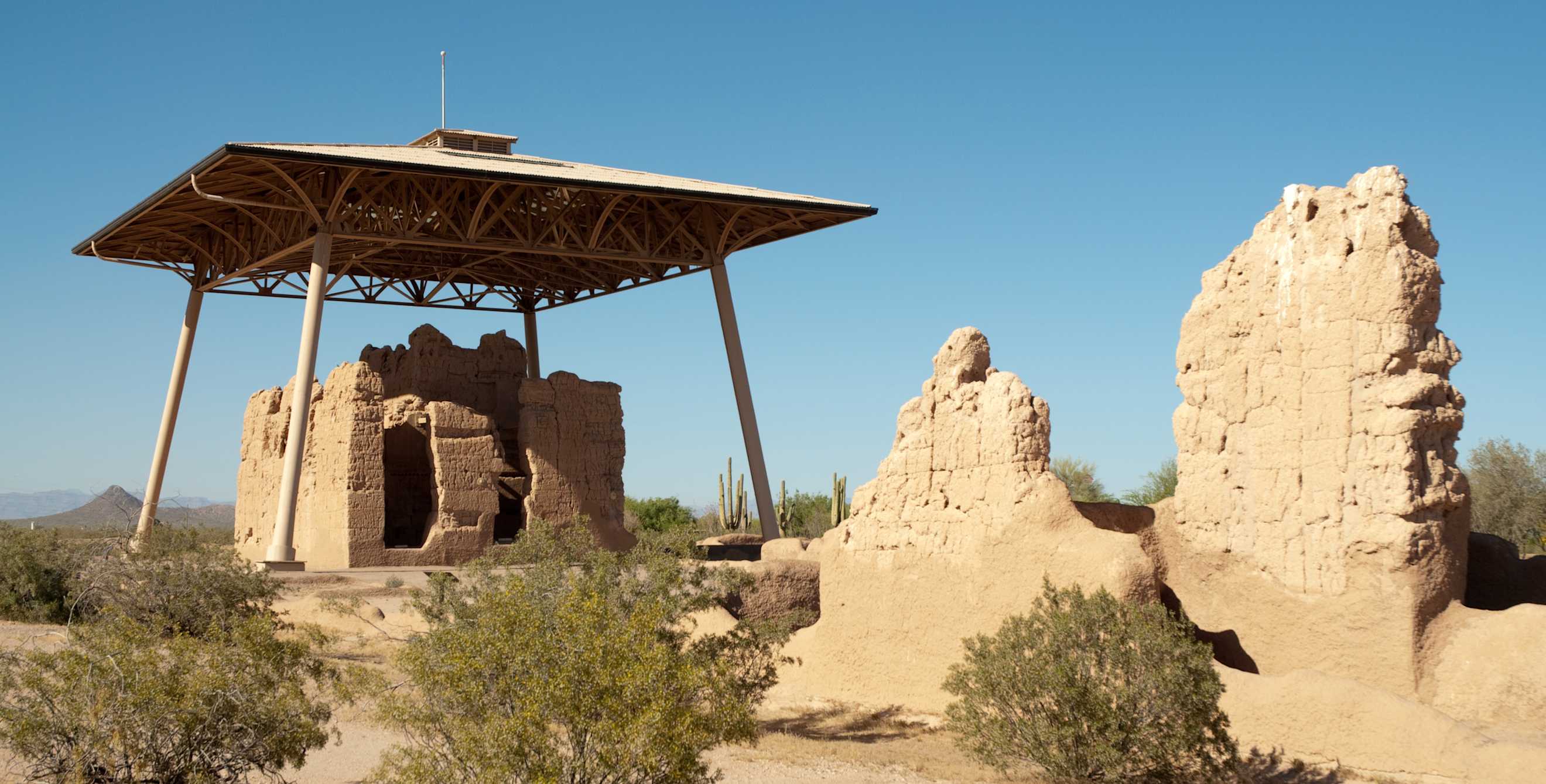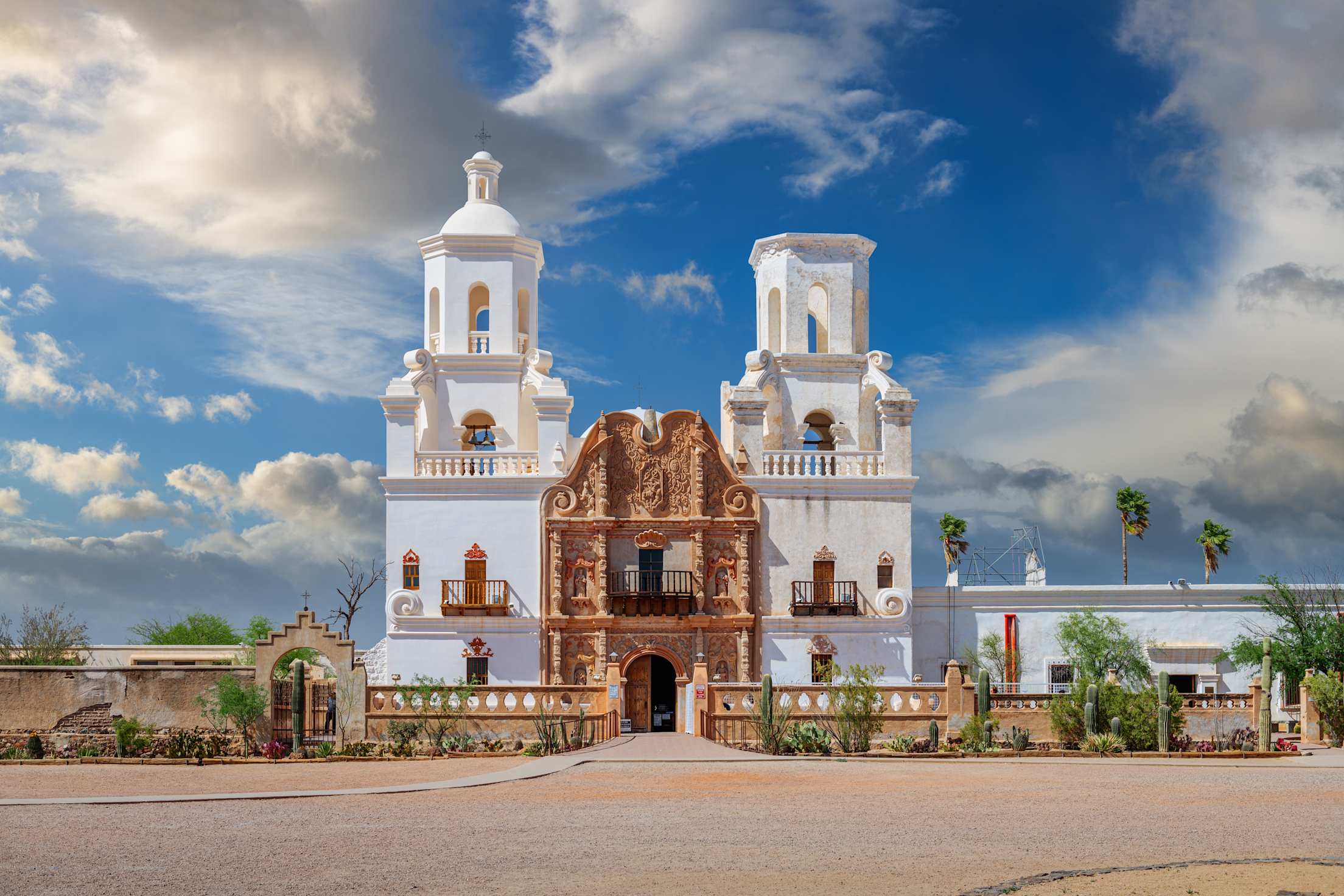
Juan Bautista de Anza National Historic Trail Road Trip Itinerary
The Arizona stretch of the Anza Trail is the ideal 3-day road trip for history buffs.

Juan Bautista de Anza was one of the great pathfinders of the American West, yet his name is unfamiliar to most Americans. In 1775, the Mexican-born Spanish military captain led a group of more than 240 soldiers, civilians, and friars on a treacherous trek across the deserts and mountains of Mexico, Arizona, and California to establish a settlement in “Alta California”—better known today as the San Francisco Bay Area.
Anza’s expedition established the first safe overland route between New Spain (present-day Mexico) and California, and helped lay a new cultural foundation in the American West. In 1990, the federal government commemorated the expedition by establishing the Juan Bautista de Anza National Historic Trail, portions of which can be explored by car, foot, horse, bicycle, and even train.
The Arizona stretch of the Anza Trail is filled with beautiful scenery, great shopping and dining pit stops, and close-up encounters with some of the oldest structures in the state. It’s the perfect three-day road trip for history buffs and modern-day explorers.
Tubac or Bust
Start your trip in the historic village of Tubac, located 45 miles south of Tucson, just off Interstate 19. Established in 1752 as a Spanish military fort, Tubac was the first European settlement in Arizona. On the morning of Oct. 23, 1775, Anza and his group assembled here, gathering more than 1,000 head of cattle, horses, and mules to take with them on their journey to Alta California.
Take a self-guided tour of the fascinating Tubac Presidio State Historic Park, which preserves and commemorates more than 2,000 years of Arizona history. Visitors can explore the underground remains of Tubac’s original Spanish presidio, tour one of the oldest schoolhouses in the territory, and see a display of the first printing press in Arizona. In October, the park hosts a colorful re-enactment of the expedition’s passage through Tubac during the annual Anza Days Celebration.
Plan on spending about three hours at the state park, and then spend the rest of the day exploring dozens of village art galleries and shops selling vibrant Southwestern pottery and crafts. For dinner, enjoy a meal and sip on a specialty margarita at Elvira’s, a local favorite for authentic Mexican cuisine. The restaurant’s fanciful interior design features electric blue walls, dramatic lighting, and dozens of glass ornaments strung from the ceiling. Spend the night at the luxurious Tubac Golf Resort & Spa, located on one of southern Arizona’s most historic ranches, just a stone’s throw from the Anza Trail.

Explore Spanish Colonial Tucson
On the second leg of your journey, head north toward Tucson for a stop at the Mission San Xavier del Bac, where Anza’s followers buried a woman who died during childbirth shortly after the group left Tubac. After a period of mourning, the group also celebrated three new marriages here.
The mission’s gracious white dome and weathered adobe archway is visible for miles across the desert. From Tubac, follow I-19 for 35 miles to the West San Xavier Road exit. Turn right onto West San Xavier Road, then right on Little Nogales Drive to loop back onto San Xavier Road. Take a free 30-minute docent tour of the mission, which is the oldest intact European structure in Arizona. The interior is filled with colorful mural paintings and statuary, giving visitors a chance to explore an authentic 18th-century space.
After giving yourself about three hours to explore the mission, stop in downtown Tucson to grab lunch at El Charro Cafe, one of the oldest Mexican restaurants in the country. Try the carne seca, which translates to “dried beef.” This northern Mexico specialty is dried in racks above the restaurant and then seasoned with secret spices. Wrap it in a warm tortilla and add a splash of salsa. Be warned: It can be quite addicting.
Mysterious Landmark in the Desert
From downtown Tucson, follow Interstate 10 west for approximately 45 miles to Arizona State Route 87. Follow AZ-87 toward Coolidge, home to the Casa Grande Ruins National Monument, the largest prehistoric Hohokam farming village in Arizona. The highlight of the monument is the enigmatic “Great House,” a four-story Hohokam structure that dates to the 1300s. The structure was a landmark for Western explorers for centuries. De Anza and his friar, Pedro Font, were among the first Europeans to visit the ruins, making a side trip from one of their campsites in October 1775. Schedule about two hours to explore the ruins and museum, and then spend the night at the historic Francisco Grande Hotel & Golf Resort, which was the spring training home of the San Francisco Giants in the 1950s.
A Famous River Crossing
On the final leg of your journey, go west toward Yuma to visit the exact spot where the Anza expedition crossed the perilous Colorado River into California. To get there, take I-10 east toward Tucson, and then take Interstate 8 west toward Yuma for roughly 180 miles. In Yuma, take the Giss Parkway exit and turn left onto 8th Street. Continue onto Giss Parkway, turn right onto South 4th Avenue, and follow the signs to the Yuma Quartermaster Depot State Historic Park. It was at this park in November 1775, that the Anza expedition successfully forded the river with help from the local Quechan tribe. The park is located within the Yuma Crossing National Heritage Area, which features a visitor center, exhibits, a gift shop, and picnic areas.
The Anza Trail continues on to California, where the group eventually reached the San Francisco Bay in March of 1776. But you’ll want to rest up here in the desert before journeying onward.
If You Go
Park and monument entrance fees vary from one site to the next, so check before departing.